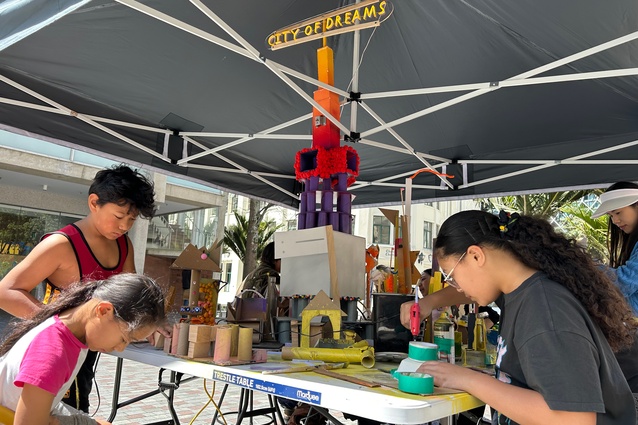Urban Art Village
Vincent van Gogh said, “there is nothing more truly artistic than to love people.” We need look no further than 2023’s Urban Art Village (part of Auckland’s Heart of the City’s annual Late Night Art) to find evidence of that maxim holding true.
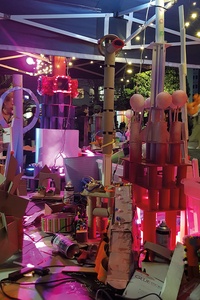
Five installations claimed 100m of O’Connell Street — turning each visitor into the artist, architect and analyst. We start at the Freyberg Steps. The skies darken and the square lights up. You step into this universe, moth to flame, and the installation by Urban Art Village veteran Matt Liggins lures you into the world of alternative architectural discourse.
Liggins always enchants; City of Dreams, first on the night’s agenda, invited citizens to dream of the future. Spray-paint fumes pushed the sunlight further into retreat and, from the cloud, emerged a new zeitgeist for Auckland. Expression was the word of the hour: toddlers dreaming up toilet-roll towers in bright pinks and yellows, bemused parents holding hot-glue guns, and jaded architecture graduates leaping at a lack of budget to realise their utopian dreams and maybe, just maybe, save us all.
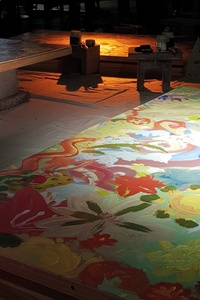
In keeping with the thread of expression, Jack Wu’s Dandelion Minds offered a zen alternative to City of Dreams’ urban furore. Amidst the city, a meadowed hinterland: a frolicking Julie Andrews would have felt right at home. Encouraging the bystander to pick up the paintbrush, this experience cultivated flowers from the mind — and, by extension, resilience within it. Recognising the great diversity of our environment (socially and biologically), Wu welcomed would-be pedestrians to contribute to a mural reflecting the garden of society: an interconnected tapestry of petal, person and potential. Dandelion Minds will soon be affixed to the face of Te Pare School of Architecture and Planning, at the University of Auckland Waipapa Taumata Rau.
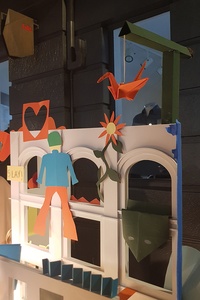
At the corner of Vulcan Lane and O’Connell Street is a table with a miniature representing our journey from Freyberg. Oliver Ray-Chaudhuri and Philip Lee offered the (oft-unseen) architectural model as medium. If Liggins made us planners and Wu gardeners, Making Site made us (with the aid of coloured paper and various adhesives) urban designers. How often is the public presented with a miniature of their space on which to speculate? The outcome? Colour, an origami crane dangling from an actual crane, and more colour.
Dian Wang’s 70x45 asked: where is our Chinatown? Riffing on both the traditional Chinese dougong and the two-by-four quintessential for Kiwi construction, Wang offered a satirical entrance to Chinatown — a lone arch standing proud next to a selection of pens (and some paint smuggled from Dandelion Minds by would-be graffiti artists). Arches are transitory — from cultural diaspora to assimilated Kiwi, from dougong to villa eave, Wang questioned the near invisibility of one of Auckland’s largest ethnic agglomerations and invited dialogue.
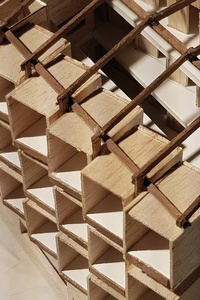
Second-year students offered for critique a selection of proposals for Papakāinga. The next generation of thinkers fielded inquiry (how often do you see what architecture students get up to?) and stood by their work until it was time to close shop. Jenga blocks repurposed as massing models offered the younger members of the community a test bed for some more radical architectural proposals.
Te Pare’s teachers, thesis students and undergraduates once again defied the boundary between art and architecture. Discourse is crucial, and there is no better way to stimulate it than to create tangible interruptions that allow citizens to make it happen, literally. There is no better encapsulation of art or design than prioritising the people, and Urban Art Village creates an environment that does that, dazzles the senses, and spits you out wondering “why can’t every day in the city centre end like that?”


